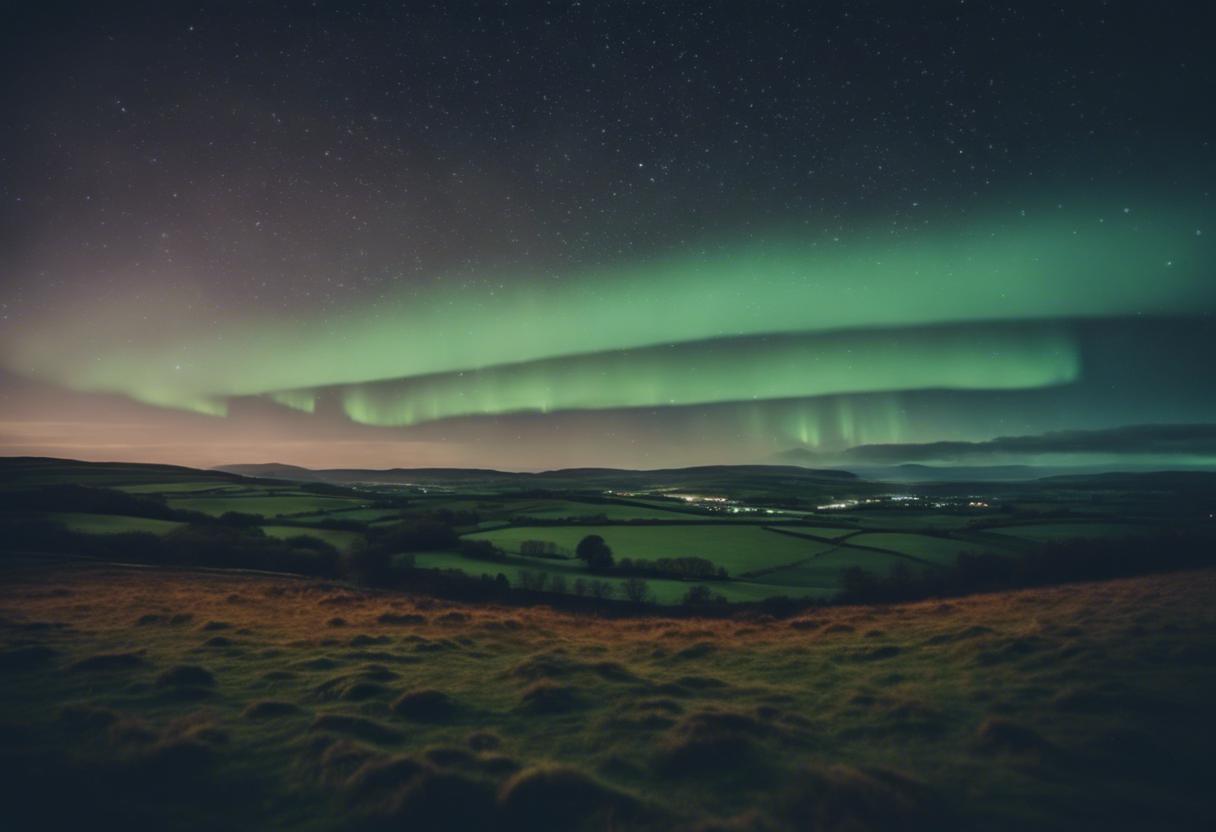Anticipations are high for a rare display of the Northern Lights, otherwise known as the aurora borealis, over the skies of Ireland this coming weekend. Unfortunately, adverse weather conditions may hinder the visibility for many across the region.
The spectacle of the Northern Lights is brought about by vast ejections of solar particles from the sun, which collide with the Earth’s magnetic field. This collision leads to the generation of vibrant lights visible mainly near the latitudes of the north and south poles.
A previously observed display of the Northern Lights in May triggered a surge of attention on social media, with numerous stunning pictures shared widely, notably from the areas flanking the Irish Sea.
David Moore, the founder of Astronomy Ireland, has stated that the display this weekend is expected to be seen “across the island”. Moore explained that if the sky were to be perfectly clear, residents from as far south as Kerry would get a good glimpse of the spectacle just as clearly as those in Donegal further north.
He emphasized that the geographic span from north to south of the island is insignificant, and suggested that the reason for more sightings in the north could be the lack of street lights due to its orientation over the Atlantic Ocean. Clear skies and minimal street light interference are ideal conditions to view the aurora, he added. However, poor weather conditions have obstructed several observations this year.
Moore also mentioned that exact timings of the aurora can be challenging to forecast, encouraging eager watchers to persistently scan the skies every half-an-hour. Unlike precise predictions for an eclipse, the aurora is influenced largely by cosmic magnetic fields. If these fail to align correctly, they won’t channel sun radiation effectively.
Previous expected appearances of the aurora, though thwarted by unsuitable magnetic field conditions, hold promise for imminent displays. The current prediction is for a significantly larger manifestation that will likely envelop both the north and south poles over the next couple of nights.
With higher certainty regarding the forecast for tonight and tomorrow, we anticipate an exciting spectacle. However, it’s not as predictable as an eclipse. In previous occurrences, it’s shown up 12 hours early or late. The advice for onlookers remains, to start peering north once darkness falls. Mr Moore, however, warned that the weather interfering might meddle with the aurora viewing experience. Clear skies are favourable, but sadly, cloud cover could frustrate many.
“The weather is our major obstacle,” Moore expressed. He recalled an occasion on May 10th, when an extraordinary aurora, the largest in 500 years as stated by NASA, showcased itself. The weather was favourable from Cork to Donegal, giving rise to an influx of images submitted to us. However, it seems as though rain will pose a challenge tonight. Though predicted to clear later on, the critical question remains – when exactly will it clear?
An update on Saturday from a spokeswoman at Met Éireann mildly dampened hopes for those expecting to lay eyes on the spectacle. She emphasised that conditions, especially in the western and southwestern regions, should improve post midnight with the clouds dispersing gradually. Unfortunately, for the rest of the country, cloud cover will persist.
She further predicted Sunday night to be majorly overcast, with only minor clear patches. This indicates far from ideal conditions for viewing the aurora.

